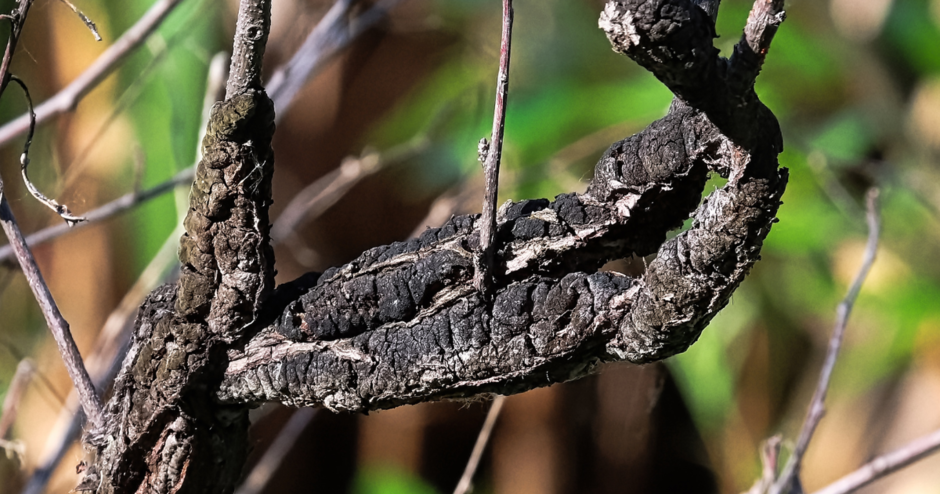How to Identify and Properly Prune Black Knot on Trees in Edson
Posted on
Spring is here, and with it comes a timely reminder about Black Knot, a common fungal disease that affects trees in the Prunus genus, such as chokecherry, mayday, and ornamental plum.
These dark, swollen, tar-like growths distort branches and, if left untreated, can eventually lead to the tree's decline and death.
The only reliable method of controlling Black Knot is proper pruning. Here's how to do it safely and effectively:
BLACK KNOT – PRUNING INSTRUCTIONS
-
When to Prune:
Prune only between late fall and early spring while the plant is dormant. The knots are easier to see during this time, and there's less risk of spreading the disease. -
How to Prune:
-
Cut 6–8 inches below the visible knot, or prune back to a healthy branch collar (the swollen area where one branch meets another).
-
Do not leave stubs. Clean cuts are crucial.
-
-
If You Can't Remove the Knot:
-
Use a sharp knife to carefully cut away the diseased tissue down to healthy wood, extending ½ inch beyond the edge of the knot to ensure no fungal material is left behind.
-
-
Disinfect Your Tools:
-
Dip pruning tools in a 1% bleach solution (1 part bleach to 99 parts water) between each cut.
-
Once finished, rinse tools under water for 10 minutes and dry thoroughly.
-
-
Proper Disposal is Critical:
-
Do not compost infected branches.
-
Burn, bury, or tightly bag and throw them in the trash.
-
Pruned branches can continue to release spores for up to four months, so treat them like hazardous material.
-
Maintaining tree health in our community is a shared responsibility. If you suspect Black Knot on your property, we encourage early action to help slow the spread.
